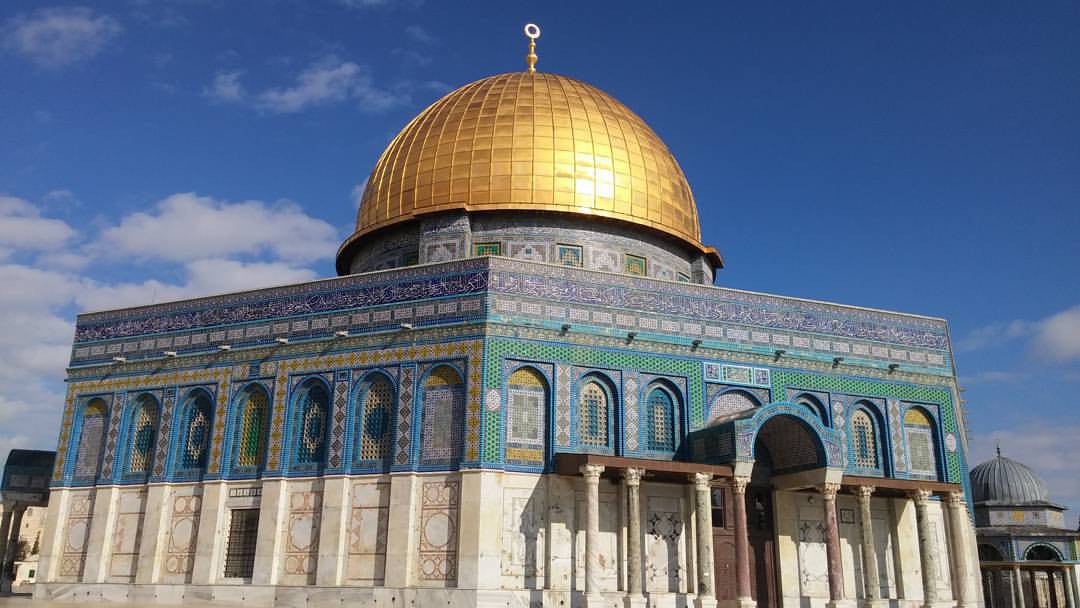
What pops into your mind when you hear ‘Israel and Palestine?’ The horrifying pictures of the protracted conflict and Muslim-majority Palestinians living under Israel’s occupation most likely become the mnemonic device in your head. As a citizen of a country with the largest Muslim population, most of our encounter with the issue stems from the mainstream news where there was an attack in Gaza, which usually followed by a rally of Muslim groups in Bundaran HI Jakarta.

As an international relations graduate, I have basic knowledge about the conflict and I want to learn further, particularly on how three Abrahamic religions assert their role in the dispute and peace-building process.
I was lucky to study at LSE, which is committed to exploring the religious dimensions in peace building process in the region. When its Faith Centre called for applications to the Interfaith Encounter trip, I dared myself to register. Being a Buddhist from Indonesia, I told myself that I had a slim chance because my religion or my country origin had nothing to do with the conflict. Although I am very familiar with Christian tenets (because I went to Christian schools) and have basic knowledge about Islam (I did my undergraduate thesis about Ahmadiyah), I still managed my expectation low.
I was ecstatic that I passed the selection to be among the selected 18 students from various countries faith, and beliefs (including agnostic and atheist) to join the one-week field trip. I always feel that if it were not with LSE, I would never have set my feet there because Indonesia does not have an official diplomatic relation with Israel (yet). Even if I could go there on another pretext (for example, pilgrimage), the trip would not have been as intense, insightful and challenging as what I had.
As a disclaimer, I won’t explain a political argument in this post because I won’t do justice without then talking about the elaborate history and it won’t fit here. Instead, I’ll briefly talk about my experience and key take away.
Our week was filled with non-stop activities. We visited the holy and religiously significant sites of three Abrahamic faiths, such as Haram al-Sharif and the White Mosque in Nazareth (Islam); The Western Wall, Yad Vashem, Tzipori and Qumran (Jewish); and the Via Dolorosa (Indonesians know this as ‘Jalan Salib’), the Church of the Holy Sepulcher, Church of the Annunciation, Capernaum (Christian).

I vividly remembered as I walked there, I disbelieved that I was at the same place where Jewish temple was built in the past, where Muhammad had miraculous Night Journey to heaven or where Jesus was on the way to his crucifixion. For some of my Muslim and Christian friends, they experienced spiritual significance because it was like a pilgrimage for them. Not only did we learn about the central tenets and tradition from each religion, including the history of highly disputed holy site, we also visited refugees camp in the West Bank, stayed overnight with Palestinian families in Bethlehem and joined Jewish devotion through a Sabbath Service at the Yedidya Synagogue and a Shabbat meal with Jewish families.
We also talked to people who have worked on the peace-building efforts on the ground, such as the Jerusalem Centre for Inter-religious Encounter, the British Embassy, Combatants for Peace, and the Hand-in-Hand School. In addition to that, we also talked to people on the opposite side of our political view, such as an Israeli settler, who believes the settlement was completely legal.
Surprising take-away
The trip reminds how never to see the conflict in black and white lens. The issue is more complex than seeing Israel vs. Palestine or Jewish vs. Muslim. The Israeli politics itself is not a single entity, but more like a spectrum, ranging from people who agree with the status quo to individuals who struggle hard to put forward the peace building process. For example, the Hand-in-Hand School is at the front line to bridge the understanding between Jewish and Arabic citizens in Israel through bilingual schools for children. Despite some vandalism and arson, the school remains steadfastly committed to its cause.

The clear cut of conflict based on religion is also of no avail – if not dangerous, especially because Jewish can be both religion and ethnicity. Playing the sentiment of a certain religion to defend the rights of Palestinian is also not healthy because Palestine itself consists of not only Muslims but also Christians, who also live in the same miserable condition.
Knowing Jewish tradition and its main tenet itself is something new for me because in Indonesia the government does not recognize Jewish as the official religion and the general population never talks about it; hence making it more like a mysterious faith.
All in all, it is hard to hear competing narratives that challenge my core belief. However, I also learn that holding our narratives dearly without trying to understand the grievances of the opponent side is also not helpful for subsiding the hostility.
Lastly, going home from the trip just makes me more humbled about how I just know a speck of overall complexity in the region. I’d be lying if I said I was ready to give two cents about the way-out from this conflict. But I think going home with more questions and further drive to learn further are better than rushing to jump to the conclusion.
If you are an LSE student, LSE Faith Centre is currently calling for application for the next trip to Israel and Palestine in 2017. Click here for further information. The deadline for applications is 23rd October 2016. I would highly encourage any LSE students with interest in pluralism, interfaith work, and peacebuilding to apply.






